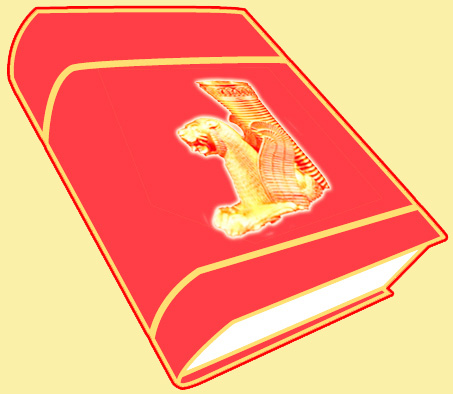MATS B & MADHAT KAKEI
|
Konstkritikern
Mats B, tillsammans med konstnären Madhat Kakei
i Sara Bokkafés Konstgalleri under
bildande "I want to paint nil"
Madhat Kakei is an intense, yet unaggressive man. He finds friends everywhere but using Sweden as his base, has succeeded in becoming internationally known after repeatedly exhibiting in Japan and Paris. After studying in Bagdad, Madhat continued at the Escuela superior de Bellas Artes de San Fernando in Madrid in the mid seventies, where he made series of large woodcuts, sad and powerful in countenance as his jet black moustache. Grappling with existential questions, he found no answers to them. The blackness of his blacks, the tension of his strokes may seem almost theatrical, bur are evidently of extreme personal import. The poet and critic Ilmar Laaban has pronounced Madhat Kakeis art as being "subterranean growth life out of death", and surely, his art does express a kind of universal striving. It is only in the last few decades that we in the West have had a chance to see virtually monochrome art loosened up in this lofty manner, with an air of contemporary icon. That the ambition driving these artists into creating these almost look-alike works, can have its source in anything from an outlook on life positive to the point of hedonism, to intellectual precision, or in the last century. William Turner, for one, who sought in his later works the sublime of the infinite in the amorphous veils of light within the atmosphere, as compared to Stephane Mallarme, who maintained that the perfect poem would be an unwritten page, or, in our own century, Erik Satie, who performed his Musique d´ameublement interior design music, as scarcely audible background music.
Since then, the 20th century has produced several quasimonochrome works, apparently neutral, or filled with tacit contradictions. Within the visual arts, colour has flowed along two main courses: one emanating from Kasimir Malevitjs metaphysical aspirations, stretching via Yves Kleins alchemistic beliefs to Imi Knoebels mental symbiosis. The other emanating from Aleksendr Rodtjenkos cold materialism, via Ad Reinhardts strict ascetisism, up to Robert Rymans heartless instruction, to paint only "the colour".
There is however, yet another stream, containing nothing of either aridity or negation. In the West this unobtrusive sublime current has been associated with the philosophers (pseudo - ) Longinus an Plotinus: "We can tell you what it is not, but we cannnot tell you what is based on the idea that all matter is animated and that its ultimate goal is a densification that nothing can withstand. An ancient outlook still very much alive coming to Europe from the Middle East with its swarming religions and ethnic tolerance. Since time immemorial the "land between the rivers" the Tigris and the Euphrates the "fartile half-moon", has been a cross-roads for various cultures and syncretisms the upshot being progressive abrogation of boundaries. Plotinus was there, Sufism with its cult of intention thrived there and even the Jessides of Kurdish descent live there with their belief in the reincarnation of good souls.
Although Madhat Kakei grew up near the river Tigris with Jessidic neighbours, he is more of a "salik", a traveller who has covered vast distance between different continents; the colours of the life-bringing of Mesopotamia, its fertile earth and verdant vegetation remaining, however, firmly wedged in his spirit, resulting in a focus of burning intensity, a far cry from the alchemist "materia prima" and the iconoplastic "tabuala rasa". Instead what we find here is a sated vitalism that radiates warm light neither hiding nor judging - rather, in the words of Ivan Agueli - a transcendantal thought vacuum.And why should not art I be allowed to set a good example?
Mats B
|

Foundation For Kurdish Library & Museum